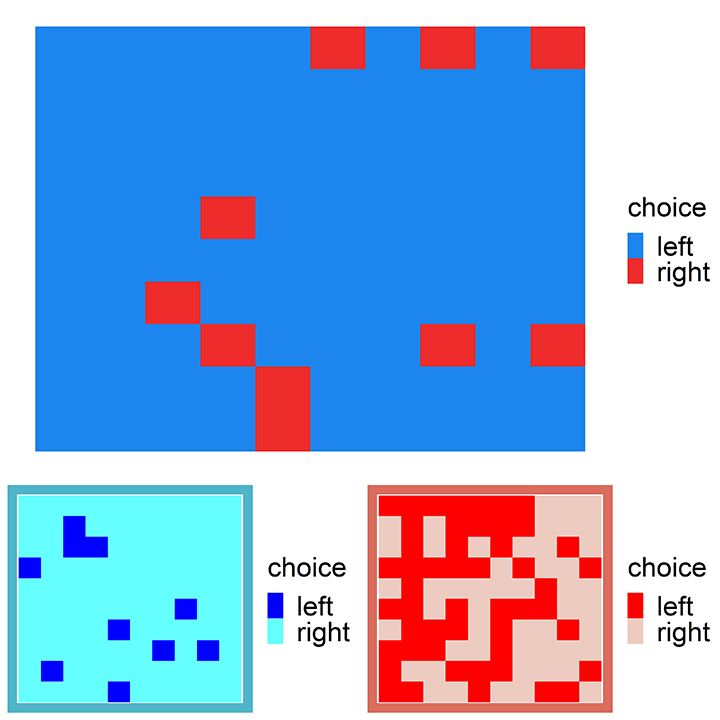Dynamic inconsistency under ambiguity: an experiment
Rocco Caferra John D. Hey Andrea Morone Marco Santorsola
Abstract
This paper experimentally investigates the potential existence of dynamically inconsistent individuals in a situation of ambiguity. The experiment involves participants making two sequential decisions concerning the allocation of a sum of money, with an ambiguous move by Nature occurring after the first decision, and again after the second. We conducted two between-subject sessions: one incentivised and one unincentivised. By analysing the resulting data, we are able to classify participants into four distinct decision-making types: myopic, resolute, sophisticated and expected utility (EU). Our results suggest that a significant proportion of the participants do not exhibit dynamic inconsistency being either Resolute, Sophisticated or EU. We discuss how monetary incentives can change the dynamic consistency of decision-makers and the salience of the Ambiguity. Differently from the incentivised treatment, we detect a slight increase of the proportion of myopic behaviour in the hypothetical case, suspecting that incentives might affect dynamic consistency, A noteworthy observation is that, in the majority of cases, ambiguity tends to simplify to risk in the absence of monetary incentives. These findings have implications for economic decision-making and policymaking. By identifying the different types of decision-makers and understanding how they make choices, we can develop more effective strategies to promote desirable outcomes.
Key words: Dynamic inconsistency; Ambiguity Box; Sequential choice; Myopic; Resolute; Sophisticated; Expected Utility
JEL Classification: D90; D81
The Data for the incentivised subjects (MS Excel ![]() , 48kb)
, 48kb)
The Data for the unincentivised subjects (MS Excel ![]() , 49kb)
, 49kb)
In both of these, The first three columns are the subjects allocations, x y and z (using the notation of the paper; the fourth column is the subject number.
The Ambiguity Box is below 
